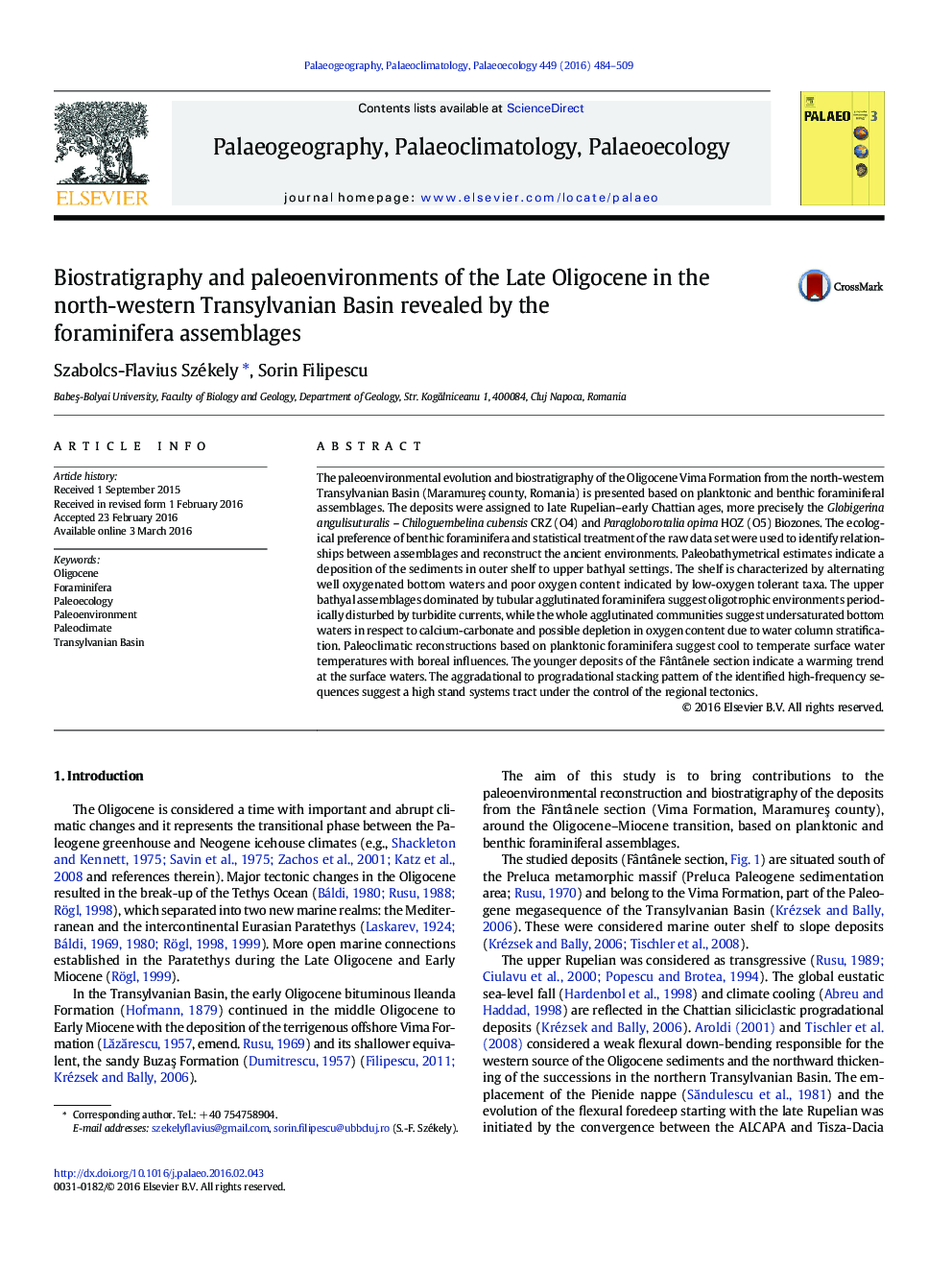| Article ID | Journal | Published Year | Pages | File Type |
|---|---|---|---|---|
| 4465781 | Palaeogeography, Palaeoclimatology, Palaeoecology | 2016 | 26 Pages |
•Suggests the deposition of the sediments during the late Rupelian–early Chattian•Paleoclimatic data shows a warming of the surface waters in the Chattian•Shows oscillating water depths, episodic primary productivity, variable oxygenation•Identifies high-frequency sequences associated with a high stand systems tract•Suggests a particular evolution of the Transylvanian Basin
The paleoenvironmental evolution and biostratigraphy of the Oligocene Vima Formation from the north-western Transylvanian Basin (Maramureș county, Romania) is presented based on planktonic and benthic foraminiferal assemblages. The deposits were assigned to late Rupelian–early Chattian ages, more precisely the Globigerina angulisuturalis – Chiloguembelina cubensis CRZ (O4) and Paragloborotalia opima HOZ (O5) Biozones. The ecological preference of benthic foraminifera and statistical treatment of the raw data set were used to identify relationships between assemblages and reconstruct the ancient environments. Paleobathymetrical estimates indicate a deposition of the sediments in outer shelf to upper bathyal settings. The shelf is characterized by alternating well oxygenated bottom waters and poor oxygen content indicated by low-oxygen tolerant taxa. The upper bathyal assemblages dominated by tubular agglutinated foraminifera suggest oligotrophic environments periodically disturbed by turbidite currents, while the whole agglutinated communities suggest undersaturated bottom waters in respect to calcium-carbonate and possible depletion in oxygen content due to water column stratification. Paleoclimatic reconstructions based on planktonic foraminifera suggest cool to temperate surface water temperatures with boreal influences. The younger deposits of the Fântânele section indicate a warming trend at the surface waters. The aggradational to progradational stacking pattern of the identified high-frequency sequences suggest a high stand systems tract under the control of the regional tectonics.
